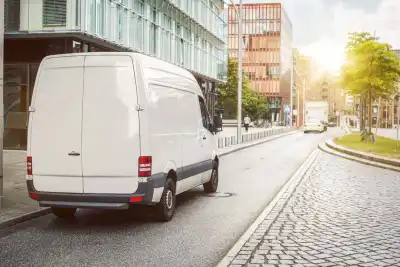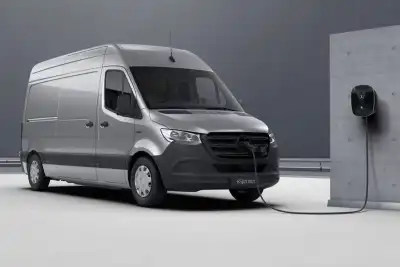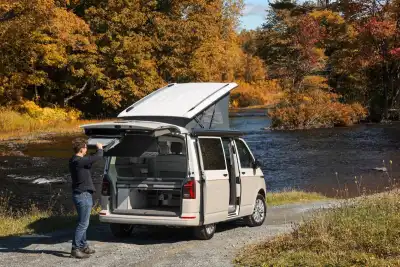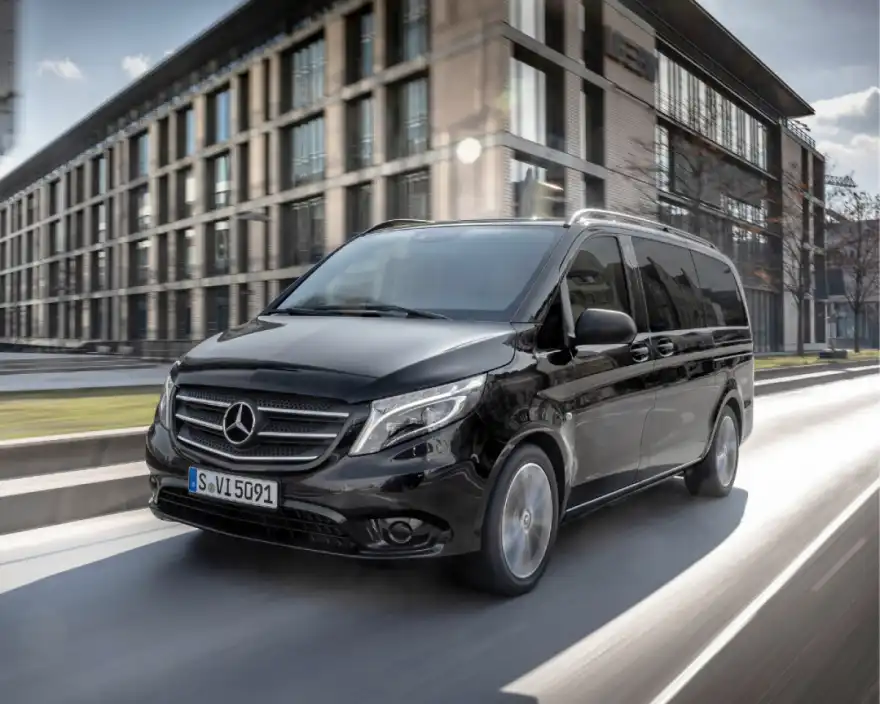
Only some people need a massive vehicle to go about their day.
Whether you’re a courier, carpenter or just need to carry lots of kit with you, there are plenty of mid-size vans on the market to choose from.
If small vans don’t quite cut it, but large vans are excessive, then there are plenty of options in the middle to meet your needs. Indeed, there’s barely a trade where a medium van won’t suffice.
Mid-size vans can also double up as regular runabouts, as many offer one and, in some cases, two passenger seats in the front, with most models offering ‘double cab’ six-seater versions.
All new vans have a flat annual road tax rate of £320 a year in the UK, while the list prices quoted all exclude VAT at 20%.
So, with that in mind, here is our guide to the best medium vans on the market.
LEVC VN5
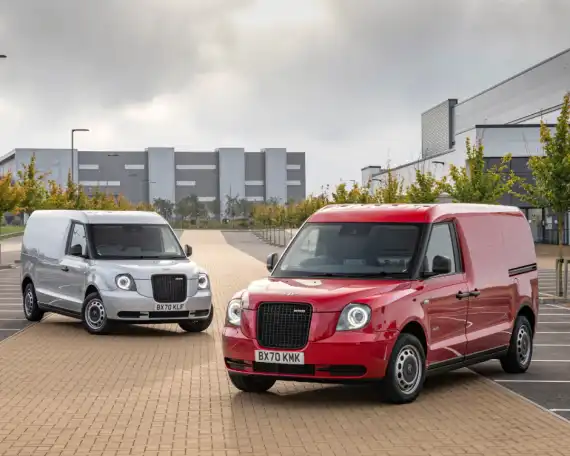
You may think you haven’t heard of LEVC, but you almost certainly have, so here’s a clue: if you’re a builder who’s had fantasies of driving a London taxi, the LECV VN5 is the van for you.
LEVC – the London Electric Vehicle Company (although based in Coventry) – is the manufacturer that makes the famed London taxi, and while it was at it, its designers thought, 'Why not make a van version, too?’.
So, they did.
Perhaps more commonly known by its former name as the London Taxi Company, its more recent name suggests its vehicles are all-electric now, but it’s not quite that simple.
You still get an engine – a 1.5-litre petrol from Volvo. But rather than driving the wheels, the powerplant acts as a generator, charging the 31kWh battery, which in turn powers the 150PS electric motor, which moves the car along.
As a result, it has a 319-mile combined range, can drive without the engine for 64 miles, and returns economy figures of up to a massive 340mpg.
LEVC also claims that the vehicle is designed to have twice the lifespan of a conventional commercial van, thanks to its bonded aluminium monocoque.
Unfortunately, that means the vehicle itself is costly, starting from £47,950 for the entry-level Business spec, but it’s very well equipped.
Loadspace measures in at 5,500 litres, with a maximum payload of 678 to 830kg depending on spec.
Despite the eco-claims, road tax is still the standard £320 a year.
Mercedes-Benz Vito
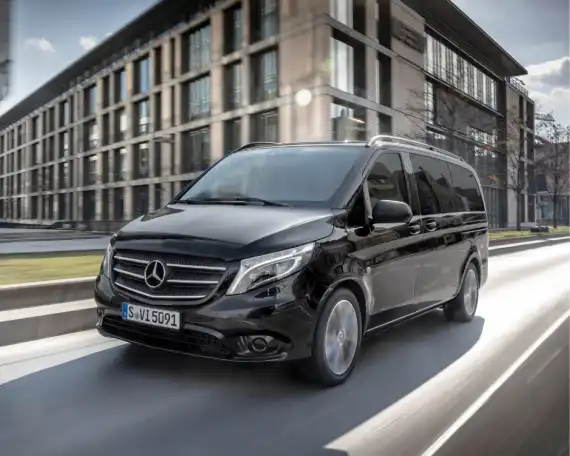
If you’re after something more luxurious, then Mercedes-Benz has you covered.
Granted, you won’t be getting an S Class-style interior in a Mercedes Vito, but the cabin design certainly looks decent by van standards and has familiar styling touches that you’d expect in a Mercedes-Benz road car.
There are several trim levels and wheelbases to choose from, and prices range from around £28,250 for the entry-level Progressive version to just over £41,000 for the top-of-the-range Premium. The latter edition features superior looks thanks to body-coloured bumpers and sporty alloy wheels.
A choice of diesel engines is offered with 116, 163 or 190PS, managing 36 to 38mpg, although actual fuel consumption depends on the model you select.
Likewise, the payload depends on the model, ranging from 788 to 970kg and a loadspace of up to 6,600 litres in the largest version.
All-in-all, the Vito is likely the most luxurious van you can buy, but with a Mercedes-Benz badge on the front, it inevitably means you’re paying a bit extra for the name.
Vauxhall Vivaro / Fiat Scudo / Toyota Proace / Peugeot Expert / Citroen Dispatch
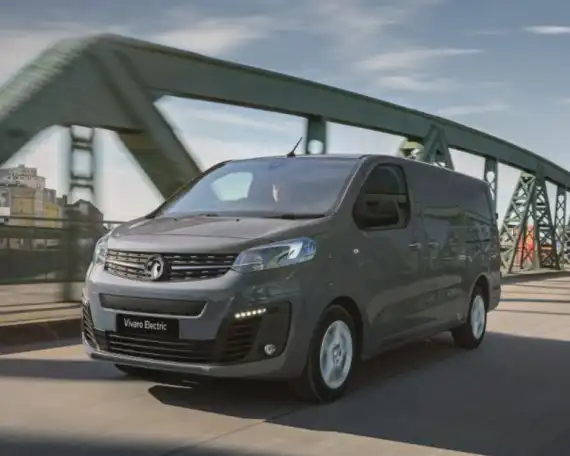
We have bunged all these together as one because they are, fundamentally, the same van with different logos on them.
The original is the Citroen Dispatch. But with Citroen being owned by the Stellantis group nowadays, it has also found its way into the dealerships of sister brands Vauxhall, Fiat and Peugeot.
In addition, Toyota manufactures the same design under licence.
The exact specs vary slightly depending on which badge you choose, but it's offered as a panel van or a six-seater with a crew cab, plus long and standard wheelbases.
Different automakers offer various engines, but most are 1.7-litre or 2.0-litre diesels which typically manage between 35 and 45mpg depending on spec.
There is an electric edition with a range of 205 miles, and it has a payload of 1017 to 1458kg with a maximum loadspace of 6,100 litres in the biggest model.
The outright cost of buying the van depends heavily on spec but typically is in the £28,000 to £40,000 ballpark for a diesel.
As a first, it’s available from some manufacturers as a hydrogen-powered variant, too, although hydrogen filling stations are scarce in the UK.
Renault Trafic / Nissan Primastar
You could be forgiven for thinking we've made a mistake because, if you know your vans, you'll know the Renault Trafic and the Vauxhall Vivaro used to be the same vehicle with different symbols on them.
In fact, the Renault Trafic used to be the genesis, with manufacturers such as Vauxhall and Nissan using Renault’s design and putting their badges on them.
Vauxhall has left the club now, but Nissan has remained, offering its version of the Trafic in the form of the virtually identical Primastar.
Renault has continued to develop and refine its original design, leading to the third-generation Trafic we have today.
It does have some similarities to the Renault Trafic’s predecessors, especially the side and rear. But the French company has taken an ‘if it ain’t broke, don’t fix it’ approach and has focused most of its efforts on a more modern front end and overhauling the interior.
It comes with a 2.0-litre diesel unit ranging from 130 to 170PS, with fuel consumption measured at around 40mpg.
It is available as a crew-cab six-seater and a panel van with prices starting from £27,500 for the low roof edition in standard wheelbase.
Available in two heights and two wheelbase sizes, it has a payload of 935 to 1,251kg, with a load space of 5,800 to 8,900 litres depending on which model you go for.
The Nissan Primastar is slightly more expensive but comes with a five-year, 100,000-mile warranty compared with Renault’s three-year, 100,000-mile offering. But Renault’s is unlimited for the first two years.
If you’re buying second-hand, note that the discontinued Fiat Talento is also basically the same van.
Volkswagen Transporter
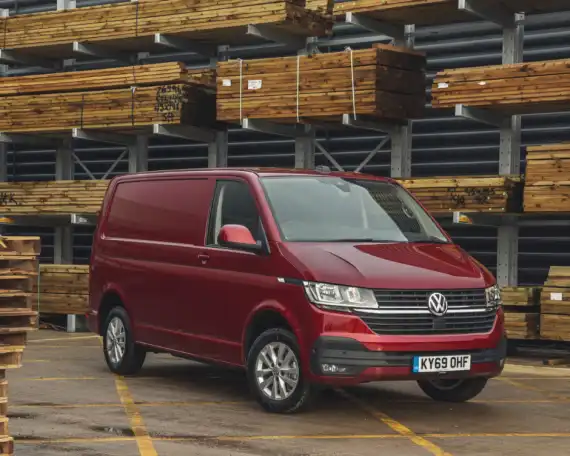
The Transporter 6.1, to give its full name, is available in three versions: Kombi, Panel Van and Sportline.
The VW Kombi offers a six-seater cab, while the Sportline is for van drivers who want to have some fun, too, delivering 204PS and boasting 18-inch alloys, plus a sportier appearance.
The Panel Van is the most popular, offering various functions such as DAB radio and cruise control. It is powered by a range of 2.0-litre diesel lumps, which produce between 110 and 150PS with manual and automatic gearboxes.
In this model, fuel consumption ranges from 37.2 to 40.9mpg.
Expect to fork out around £33,500 for the standard panel van and £36,600 for the Kombi version. Meanwhile, the Sportline costs significantly more, starting at just over £58,100.
There are electric varieties available, too.
Loadspace is 5,800 to 6,700 litres, although opting for the high roof variant ups this to as much as 9,300 litres, with payloads of 715 to 1,384kg depending on spec.
Ford Transit Custom
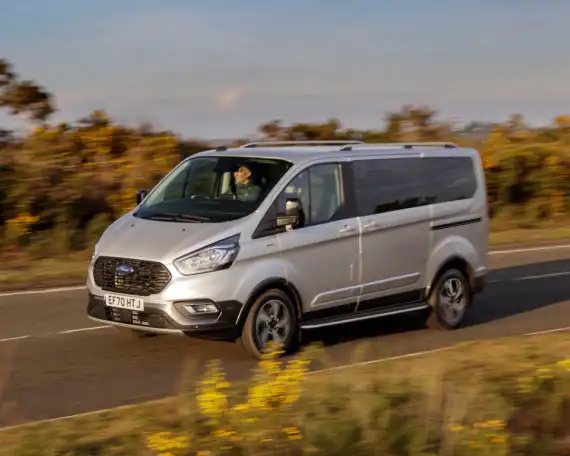
Of course, no list of vans would be complete without mentioning the Ford Transit.
The name Transit became so synonymous with Ford vans that, nowadays, it’s the standard name for Ford’s entire portfolio, and the Custom is the mid-size model.
There are panel and double-cab versions available, priced from around £32,350. In addition, various trims are on sale, offering many creature comforts, including one model whose styling would look more at home on a sportscar.
Even though a new Custom has recently been launched, the old model is still on sale and is slightly cheaper. But the more recent van modernises the looks slightly with a wider front end.
It is available with a 2.0-litre diesel with 110, 136, 150 or 170PS, with some all-wheel drive versions offered in two wheelbase lengths.
A plug-in hybrid and an all-electric version are available, too.
Customs have a payload of 890 to 1,327kg depending on which you pick, with the loadspace ranging from 5,800 to 9,000 litres.
Fuel economy in the diesels ranges from 36 to 40mpg, while different trims are offered, with higher models looking that little bit posher.

